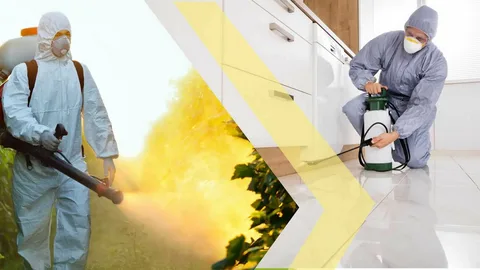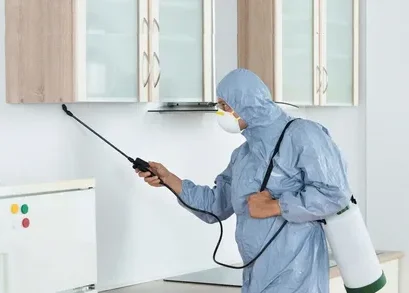Introduction To Pest Control
Pest control is an essential part of maintaining a clean, safe, and healthy environment. Whether at home or in commercial spaces, pests can wreak havoc on property and pose serious health risks. From rodents to insects, the presence of pests can lead to property damage, food contamination, and various diseases. Among these, one of the most challenging pests to deal with are bed bugs, which are not only difficult to eradicate but also a significant source of distress for homeowners.
In this comprehensive guide, we will explore the importance of pest control, how to identify common pests, and effective bed bug treatment methods to ensure a pest-free living or working space.
The Importance of Pest Control
Pest control is the process of managing or eliminating pests that pose health risks, destroy property, or disrupt daily life. Some of the most common pests include:
- Rodents (rats and mice): Known for chewing wires and contaminating food.
- Cockroaches: Carriers of bacteria and allergens.
- Termites: Causes significant structural damage to wood and buildings.
- Ants: Often invade food sources and carry bacteria.
- Bed bugs: Small, reddish-brown insects that bite and cause irritation.
While these pests are bothersome on their own, the real dangers often lie in the diseases and allergens they carry. For example, rodents are known to transmit diseases like hantavirus and salmonella, while cockroaches can exacerbate asthma and allergies. Regular pest control treatments ensure a hygienic environment, reduce the risk of infections, and preserve property.
Recognizing Bed Bugs: Identification and Behavior
Bed bug treatment are one of the most notorious pests, primarily due to their ability to invade homes silently and hide in tiny cracks and crevices. These insects are nocturnal and typically come out to feed on human blood during the night. Bed bugs are small, flat, oval-shaped insects, usually ranging from 1/4 inch to 3/8 inch in size. Their brownish-red color makes them look similar to an apple seed.
Signs of a bed bug infestation include:
- Bites: Red, itchy welts often appear on the skin after a bed bug has fed.
- Bloodstains: You may notice small blood spots on your sheets or clothing.
- Fecal spots: Bed bugs leave behind dark, speckled marks on surfaces where they rest.
- Eggs or shell casings: These small white eggs or translucent shells may be found near the bed or hidden corners.
Bed bugs are usually introduced into a home through second-hand furniture, clothing, or luggage. They are notoriously difficult to detect because they hide during the day and only come out at night when people are asleep.
Risks of a Bed Bug Infestation
Beyond the physical discomfort of bites, bed bugs can cause significant emotional distress. People who suffer from bed bug infestations may experience anxiety, stress, and sleeplessness, which can affect their overall quality of life.
Bed bug bites are generally not dangerous, but they can cause allergic reactions, severe itching, and in some cases, secondary infections if the bites are scratched excessively.
Effective Pest Control Methods
When it comes to pest control, prevention is key. However, once an infestation occurs, a comprehensive approach is necessary to ensure complete eradication. Below are the main strategies used in pest control for both common pests and bed bugs.
1. Chemical Pest Control
Chemical pest control involves using insecticides and pesticides to eliminate pests. This method can be highly effective in eliminating a wide range of pests, including bed bugs, ants, cockroaches, and rodents. However, it is essential to ensure the proper use of chemicals, as some products can be harmful to pets or children.
For bed bug treatment, professional pest control companies often use a combination of insecticides that target different stages of the bed bug lifecycle (eggs, nymphs, and adults).
2. Heat Treatment
One of the most effective methods for treating a bed bug infestation is through heat treatment. Bed bugs are sensitive to high temperatures, and exposing them to temperatures above 113°F (45°C) for an extended period can kill them at all life stages.
3. Integrated Pest Management (IPM)
Integrated Pest Management (IPM) is an eco-friendly and holistic approach to pest control that combines several pest management techniques. It focuses on long-term prevention and the least-toxic methods possible. An IPM strategy may include:
- Monitoring: Identifying early signs of infestations and tracking pest activity.
- Sanitation: Removing food and water sources that attract pests.
- Exclusion: Sealing cracks and crevices where pests can enter the property.
- Biological control: Using natural predators or parasites to control pest populations.
This approach is ideal for people looking for more sustainable pest control solutions and may be especially effective in managing pests like rodents and insects.
4. Physical and Mechanical Control
For pests like rodents, using physical barriers (such as traps and barriers) can be an effective way to control their population. In the case of bed bugs, mattress encasements and sealing cracks in the walls can prevent them from hiding or spreading to new areas.
While mechanical methods can help reduce the population of pests, they are typically not enough on their own to fully eliminate an infestation.
Bed Bug Treatment: A Step-by-Step Guide
If you suspect you have a bed bug infestation, acting quickly is essential to prevent the spread of these resilient pests. Here’s a step-by-step guide to effective bed bug treatment:
- Inspection: Start by thoroughly inspecting your home. Look for signs of bed bugs, such as bites, bloodstains, and eggs in areas around your bed, furniture, and walls. Consider hiring a professional pest control service to perform a detailed inspection.
- Declutter: Bed bugs love hiding in cluttered areas. Remove unnecessary items from the affected areas to make it easier for treatment to reach the pests.
- Clean and Wash: Wash all bedding, clothing, and fabrics in hot water and dry them on a high heat setting. This will kill any bed bugs hiding in fabrics. Vacuum the area thoroughly, paying attention to cracks and crevices.
- Use Mattress Encasements: Invest in high-quality mattress and box spring encasements to trap any bed bugs inside and prevent them from coming back. These encasements should be left on for several months to ensure all bugs are eliminated.
- Consider Professional Treatment: If you cannot eliminate the infestation through DIY methods, contact a professional pest control service. They have access to stronger chemicals, heat treatments, and other tools to ensure effective bed bug eradication.
Prevention of Bed Bug Infestations
To prevent future infestations, follow these tips:
- Inspect second-hand furniture: Always check second-hand items for signs of bed bugs before bringing them into your home.
- Use protective covers: Use mattress and pillow encasements to prevent bed bugs from hiding in your bedding.
- Keep your home clean: Regularly vacuum your floors, carpets, and furniture to remove potential bed bugs.
- Seal cracks and crevices: Repair any cracks or crevices in walls, floors, and around windows to prevent pests from entering your home.
Conclusion
Pest control is essential for maintaining a healthy and safe living or working environment. Whether dealing with ants, rodents, or the more troublesome bed bugs, understanding the risks and treatments available is crucial to combating infestations. Bed bugs, in particular, are difficult to manage but can be effectively treated with the right methods, such as chemical treatments, heat application, and professional pest control services.












